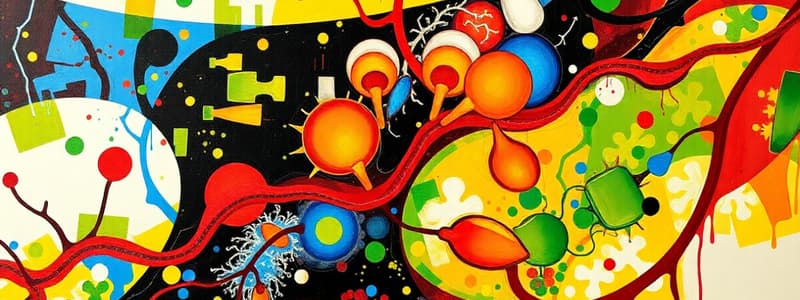Podcast
Questions and Answers
What is the main purpose of ATP in cellular processes?
What is the main purpose of ATP in cellular processes?
- To synthesize proteins
- To provide energy for cellular functions (correct)
- To act as a genetic material
- To repair damaged DNA
Which stages of cellular respiration produce ATP directly?
Which stages of cellular respiration produce ATP directly?
- Glycolysis and Krebs Cycle (correct)
- Krebs Cycle and Electron Transport Chain
- Glycolysis and Acetyl CoA Conversion
- Acetyl CoA Conversion and Electron Transport Chain
What is the net ATP yield from one molecule of glucose during glycolysis?
What is the net ATP yield from one molecule of glucose during glycolysis?
- 1 ATP
- 2 ATP (correct)
- 4 ATP
- 6 ATP
Which molecule is a product of the Krebs Cycle?
Which molecule is a product of the Krebs Cycle?
How many ATP are produced from NADH in the electron transport chain?
How many ATP are produced from NADH in the electron transport chain?
Flashcards
Cellular Respiration: What is it?
Cellular Respiration: What is it?
Cellular respiration is a process that converts glucose and oxygen into carbon dioxide, water, and energy in the form of ATP. This energy is essential for various cellular functions.
What is Glycolysis?
What is Glycolysis?
Glycolysis is the first stage of cellular respiration, where a glucose molecule (6 carbons) is broken down into two pyruvate molecules (3 carbons each). This process generates a small amount of ATP and NADH.
What happens in the Krebs Cycle?
What happens in the Krebs Cycle?
The Krebs Cycle (also called the Citric Acid Cycle) is the third stage of cellular respiration, where Acetyl CoA molecules are broken down, generating CO2, ATP, NADH and FADH2.
What is the Electron Transport Chain?
What is the Electron Transport Chain?
Signup and view all the flashcards
How does the ETC make ATP?
How does the ETC make ATP?
Signup and view all the flashcards




